- Benefits of Planting Strawberries with Garlic
- Enhanced Disease Resistance
- Benefits of Enhanced Disease Resistance
- How to Plant Strawberries with Garlic for Enhanced Disease Resistance
- Natural Pest Control
- 1. Companion Planting
- 2. Neem Oil
- 3. Garlic Spray
- 4. Floating Row Covers
- 5. Handpicking
- Improved Flavor and Aroma
- Increased Yield
- 1. Improved Nutrient Absorption
- 2. Enhanced Soil Quality
- 3. Natural Pest Deterrent
- 4. Longer Growing Season
- 5. Companion Planting Benefits
- Weed Suppression
- Benefits of Weed Suppression with Garlic
- How to Plant Strawberries with Garlic for Weed Suppression
- Additional Tips for Weed Suppression
- Garlic as a Companion Plant
- Steps to Plant Strawberries with Garlic
- Step 1: Prepare the Soil
- Step 2: Choose the Garlic
- Step 3: Prepare the Garlic Cloves
- Step 4: Planting Garlic
- Step 5: Planting Strawberries
- Step 6: Caring for the Plants
- Tips for Successful Planting
- 1. Choose the Right Location
- 2. Prepare the Soil
- 3. Choose the Right Varieties
- 4. Plant at the Right Time
- 5. Proper Spacing
- 6. Watering
- 7. Mulching
- 8. Fertilizing
- 9. Pest and Disease Control
- 10. Harvesting
- 11. Crop Rotation
- Question-answer:
- Can planting garlic with strawberries provide protection?
- What are the benefits of planting strawberries with garlic?
- How does garlic protect strawberries from pests?
- What diseases can planting garlic with strawberries prevent?
- How should I plant garlic with strawberries?
- Video: 11 Best Strawberry Compamion Plants (And Plants To Avoid)
Strawberries are a delicious and nutritious fruit that many gardeners enjoy growing in their backyard. However, strawberries are also susceptible to a variety of pests and diseases that can greatly reduce their yield. One natural and effective way to protect strawberries from such threats is by planting them with garlic.
Garlic is well-known for its strong odor and potent compounds that can repel insects, nematodes, and other pests. By interplanting garlic with strawberries, you can create a natural barrier that deters pests and reduces the risk of damage to your strawberry plants.
The process of planting strawberries with garlic is relatively simple. Start by preparing the soil in your garden bed or container. Remove any weeds or grass, and ensure that the soil is well-drained and rich in organic matter.
Next, plant the garlic cloves in the soil approximately 6 to 8 inches away from the strawberry plants. Make sure to plant them at a depth of 1 to 2 inches, with the pointed end facing upwards. Space the garlic cloves about 4 to 6 inches apart to allow for proper growth.
As the garlic and strawberry plants grow, their roots will intertwine, creating a symbiotic relationship. The garlic will release compounds into the soil that repel pests, while the strawberry plants will benefit from the increased protection and nutrients provided by the garlic.
Remember to water the plants regularly and provide them with adequate sunlight to ensure healthy growth. In addition to protecting your strawberries, planting them with garlic can also enhance the flavor and aroma of the fruit, making it even more enjoyable for you and your family to savor.
Benefits of Planting Strawberries with Garlic
Planting strawberries with garlic can provide various benefits for your strawberry plants and garden as a whole. Here are some of the advantages of this planting combination:
- Natural pest repellent: Garlic is known for its strong scent, which can repel many pests that may damage strawberry plants. By planting garlic alongside strawberries, you can create a natural barrier that helps protect the plants from common pests like aphids, slugs, and spider mites.
- Disease prevention: Garlic has natural antifungal and antibacterial properties, and planting it with strawberries can help prevent diseases that commonly affect these plants, such as gray mold (Botrytis cinerea) and powdery mildew (Podosphaera aphanis).
- Improved soil health: Garlic acts as a natural biofumigant, releasing sulfur compounds into the soil as it grows. These compounds can help suppress soil-borne pests and diseases, and improve the overall health and fertility of the soil, which is beneficial for strawberry plants.
- Insect pollination: Garlic plants produce beautiful flowers that attract pollinators such as bees. Having these pollinators in your garden can increase the chances of successful pollination for your strawberries, leading to better fruit set and yields.
- Companion planting: Planting strawberries and garlic together is a form of companion planting. Companion plants provide mutual benefits for each other, such as repelling pests, attracting beneficial insects, and promoting overall plant health. By combining strawberries with garlic, you can create a diverse and balanced garden ecosystem.
Overall, planting strawberries with garlic can provide reliable protection against pests and diseases, promote soil health, and enhance the productivity of your strawberry plants. Additionally, it offers the opportunity to create a vibrant and harmonious garden environment.
Enhanced Disease Resistance
Planting strawberries with garlic can significantly enhance disease resistance in your strawberry garden. Garlic contains antimicrobial and antifungal properties that can help protect your strawberry plants from various diseases and pests.
When garlic is planted near strawberries, it releases compounds such as allicin that act as a natural repellent against pests like aphids, spider mites, and slugs. These compounds make it less likely for diseases to take hold, as pests tend to spread diseases.
Benefits of Enhanced Disease Resistance
- Reduced use of chemical pesticides: By planting strawberries with garlic, you can reduce the need for chemical pesticides, making your garden more environmentally friendly.
- Protection against fungal diseases: Garlic’s antifungal properties can help prevent diseases like Fusarium wilt and gray mold, which commonly affect strawberry plants.
- Improved plant health: By boosting the disease resistance of your strawberry plants, you can promote better overall plant health, leading to increased yield and quality of strawberries.
How to Plant Strawberries with Garlic for Enhanced Disease Resistance
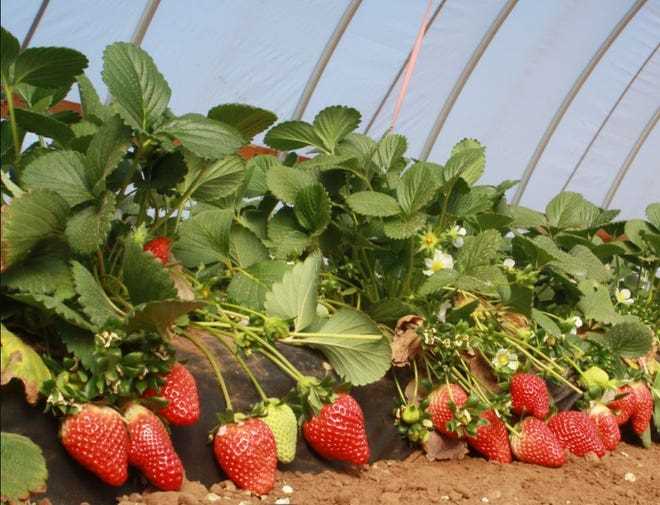
Here is a step-by-step guide on how to plant strawberries with garlic to enhance disease resistance in your garden:
- Prepare the soil: Ensure that the soil is well-draining and rich in organic matter. Remove any weeds or debris.
- Choose healthy strawberry plants: Select disease-resistant strawberry varieties and healthy garlic cloves.
- Plant garlic cloves: Plant garlic cloves in the soil, spacing them about 6 inches apart. Each clove should be planted about 2 inches deep.
- Plant strawberry plants: Dig holes for the strawberry plants, spacing them about 12 to 18 inches apart. Place each plant in a hole, ensuring that the crown is above the soil surface.
- Water and mulch: Water the plants thoroughly after planting and apply a layer of organic mulch around the strawberry plants to conserve moisture and suppress weed growth.
- Maintain regular care: Provide adequate water, sunlight, and nutrients to the plants. Remove any weeds or diseased leaves promptly to prevent the spread of diseases.
By following these steps and planting strawberries with garlic, you can enhance the disease resistance of your strawberry garden and enjoy a bountiful and healthy harvest.
Natural Pest Control
Strawberries are susceptible to various pests that can greatly damage the plants and reduce the quality and quantity of the crop. However, there are several natural pest control methods that can help protect your strawberry plants:
1. Companion Planting
Companion planting involves growing certain plants near strawberries that repel or deter pests. Some popular companion plants for strawberries include:
- Marigolds: Marigolds are known to repel various pests, including aphids, nematodes, and beetles.
- Nasturtiums: Nasturtiums attract aphids away from strawberries, acting as a sacrificial plant.
- Borage: Borage attracts beneficial insects, such as bees, which help pollinate strawberries and control pests.
- Chives: Chives repel aphids and deter other pests, while also attracting beneficial insects.
- Onions: Onions can act as a deterrent for certain pests, such as slugs and snails.
2. Neem Oil
Neem oil is a natural oil extracted from the neem tree. It is effective against a wide range of pests, including aphids, mites, and caterpillars. Mix neem oil with water according to the instructions on the product label and spray it onto the strawberry plants to control pests. Be sure to apply it early in the morning or late in the evening to avoid harming beneficial insects.
3. Garlic Spray
Garlic is a powerful natural pest repellent. To make a garlic spray, crush several cloves of garlic and soak them in water overnight. Strain the liquid and add it to a spray bottle. Spray the mixture onto the strawberry plants to deter pests like aphids and slugs. Repeat the application every two weeks or after rainfall.
4. Floating Row Covers
Floating row covers are lightweight fabric covers that are placed over strawberry plants to physically exclude pests. They can be particularly effective against flying insects, such as fruit flies and birds. Secure the covers over the plants using stakes or rocks, making sure to leave enough space for the plants to grow.
5. Handpicking
If you notice any pests on your strawberry plants, such as slugs or caterpillars, you can manually remove them by handpicking them off the plants. This method is time-consuming but can be effective for small-scale infestations.
By utilizing these natural pest control methods, you can protect your strawberry plants from pests and enjoy a healthy and productive harvest.
Improved Flavor and Aroma
Planting strawberries with garlic not only provides reliable protection against pests and diseases but also offers additional benefits in terms of flavor and aroma. The natural compounds in garlic can enhance the taste and smell of strawberries, resulting in a more enjoyable eating experience.
Garlic contains sulfur compounds, such as allicin, that can contribute to the overall flavor profile of strawberries. When strawberries are planted alongside garlic, these compounds can be absorbed by the plants, infusing them with a subtle garlic undertone. This adds depth to the natural sweetness of the strawberries, creating a unique and delicious flavor combination.
Furthermore, the aroma of garlic can also enhance the overall sensory experience of eating strawberries. As the strawberries grow in close proximity to the garlic plants, they can absorb the aroma molecules released by the garlic bulbs. This can create a tantalizing scent that lingers around the strawberries, making them even more enticing and irresistible.
In addition to improving the flavor and aroma, planting strawberries with garlic can also have a positive impact on the health of the strawberry plants. Garlic has natural fungicidal and antibacterial properties, which can help protect the strawberries from common plant diseases. By warding off these diseases, the strawberry plants can focus their energy on producing high-quality fruits with enhanced flavors.
Overall, the combination of strawberries and garlic offers a win-win situation for both the grower and the consumer. The strawberries benefit from reliable protection against pests and diseases, while the garlic imparts a unique flavor and aroma that elevates the taste experience. So, consider planting strawberries with garlic to enjoy not only healthier plants but also enhanced flavors in your harvest.
Increased Yield
Planting strawberries with garlic not only provides protection against pests and diseases, but it can also help increase the overall yield of strawberries.
1. Improved Nutrient Absorption
When garlic is planted in close proximity to strawberries, it can help improve nutrient absorption. Garlic has natural compounds that can enhance the availability and uptake of essential nutrients in the soil. This means that strawberries planted with garlic can access more nutrients, leading to healthier plants and higher yields.
2. Enhanced Soil Quality
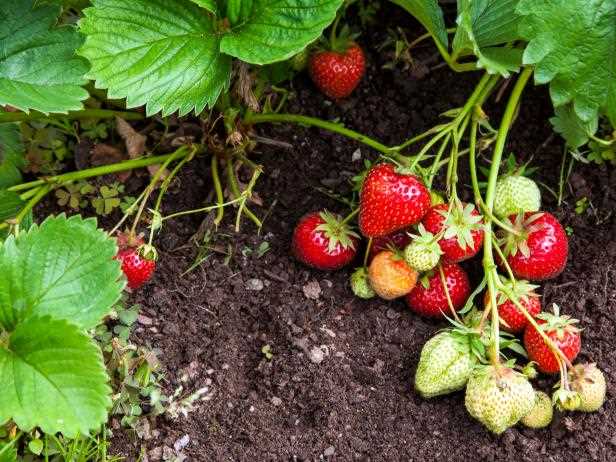
Garlic releases certain compounds into the soil as it grows and decomposes. These compounds can improve the overall quality of the soil, making it more fertile and conducive to strawberry growth. By planting garlic alongside strawberries, you are enriching the soil and creating a favorable environment for higher yields.
3. Natural Pest Deterrent
As mentioned earlier, garlic acts as a natural pest deterrent. By planting garlic among strawberries, you are protecting them from potential pests and diseases. With fewer pests and diseases to contend with, strawberry plants can focus their energy on fruit production, resulting in larger and more abundant harvests.
4. Longer Growing Season
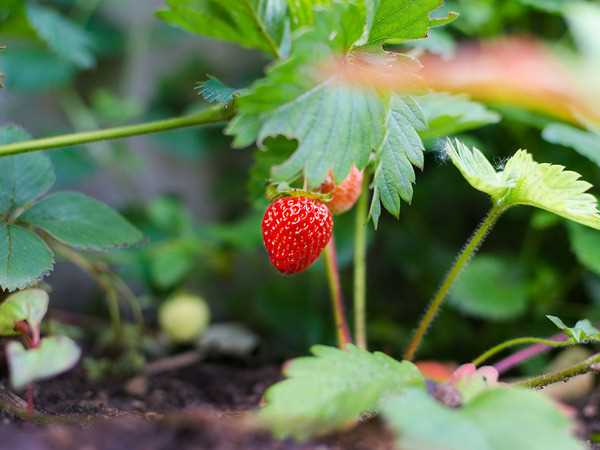
By planting garlic with strawberries, you can extend the growing season to some extent. Garlic planted in the fall can help protect strawberries during the winter months, allowing them to continue growing and producing fruits earlier in the spring. This extended growing season can lead to increased yields over time.
5. Companion Planting Benefits
Companion planting strawberries with garlic is a known gardening technique that takes advantage of the symbiotic relationship between certain plants. Garlic can attract beneficial insects that prey on pests, further reducing the risk of infestations in your strawberry patch. Additionally, the strong smell of garlic can mask the scent of strawberries, making them less attractive to pests.
Overall, planting strawberries with garlic can result in increased yield due to improved nutrient absorption, enhanced soil quality, natural pest deterrent effects, longer growing season, and companion planting benefits. Consider incorporating garlic into your strawberry growing practices to enjoy higher yields and healthier plants.
Weed Suppression
Weeds can be a major problem in strawberry beds, competing for nutrients, water, and sunlight. However, planting garlic alongside strawberries can help suppress the growth of weeds.
Benefits of Weed Suppression with Garlic
There are several benefits of using garlic to suppress weed growth:
- Natural Weed Control: Garlic contains natural compounds that can inhibit the growth of many common weeds.
- Protects Soil Moisture: The dense foliage of garlic acts as a mulch, preventing evaporation and helping to maintain soil moisture levels.
- Improves Soil Health: As garlic decomposes, it releases organic matter into the soil, improving its structure and fertility.
- Reduces Herbicide Use: By using garlic as a weed suppressor, you can reduce the need for synthetic herbicides, promoting a more eco-friendly gardening approach.
How to Plant Strawberries with Garlic for Weed Suppression
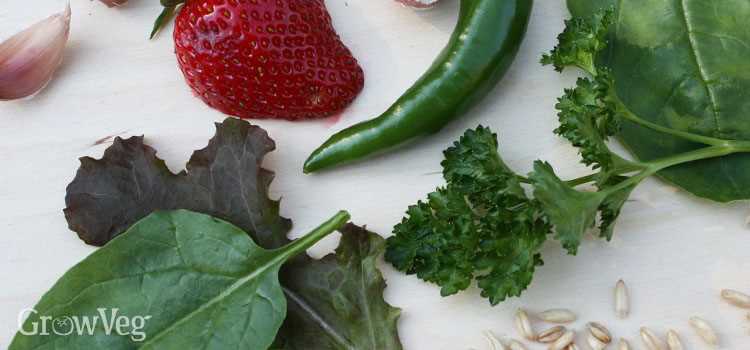
Here’s a step-by-step guide for planting strawberries with garlic to effectively suppress weeds:
- Prepare the Soil: Clear the bed of any existing weeds and cultivate the soil to a depth of 6-8 inches. Remove any large rocks or debris.
- Plant the Garlic: Plant the garlic cloves in rows between the strawberry plants. Make sure to space the cloves about 6-8 inches apart and plant them 2 inches deep.
- Mulch the Bed: After planting the garlic, apply a layer of mulch around the strawberry plants and garlic cloves. This will help suppress weeds and conserve soil moisture.
- Maintain the Bed: Regularly monitor the bed for weed growth and remove any weeds that manage to emerge. Be careful not to disturb the strawberry plants or garlic cloves while weeding.
Additional Tips for Weed Suppression
Here are some additional tips to effectively suppress weeds in your strawberry beds:
- Choose Weed-Free Plants: Start with weed-free strawberry plants to minimize the introduction of weeds into the bed.
- Use Organic Mulch: Consider using organic mulch, such as straw or wood chips, to provide an additional barrier against weed growth.
- Water Properly: Water the strawberry plants at the base to avoid wetting the mulch, which can encourage weed growth.
- Regular Maintenance: Keep the bed tidy by removing dead foliage and debris regularly, as they can create a favorable environment for weed growth.
By following these steps and implementing effective weed suppression techniques, you can enjoy a healthier strawberry bed with fewer weeds and a higher yield of delicious strawberries.
Garlic as a Companion Plant
Garlic has been used for centuries as a companion plant in the garden. It possesses natural properties that can benefit other plants and help deter pests. By planting garlic near strawberries, you can not only protect your strawberry plants but also enhance their growth and flavor.
Pest Deterrent:
Garlic’s strong smell and natural compounds act as a natural deterrent to many pests. It can help repel aphids, spider mites, and other common strawberry pests. Planting garlic bulbs around your strawberry plants creates a protective barrier that pests may avoid.
Antifungal Properties:
Garlic also possesses antifungal and antibacterial properties. These properties can help prevent the growth and spread of fungal diseases such as powdery mildew or gray mold in your strawberry patch. Planting garlic alongside your strawberries can help reduce the risk of fungal infections.
Improves Soil Quality:
Garlic releases sulfur compounds into the soil as it grows, which can help improve soil quality. These compounds act as natural fertilizers that enrich the soil, providing essential nutrients for your strawberry plants. The improved soil fertility can result in healthier and more productive strawberry plants.
Companion Planting Tips:
When planting garlic as a companion to strawberries, there are a few tips to keep in mind:
- Plant garlic bulbs around the perimeter of your strawberry patch, creating a protective border.
- Space the garlic bulbs evenly, leaving enough room for both plants to grow and thrive.
- Rotate the location of the garlic and strawberries each year to prevent the buildup of pests or diseases.
- Harvest garlic bulbs when they are mature, but be careful not to damage the strawberry plants.
Conclusion:
By planting garlic as a companion to strawberries, you can enjoy the benefits of natural pest control and improved soil quality. It’s a simple and effective way to protect your strawberry plants and enhance their overall health and productivity.
Steps to Plant Strawberries with Garlic
Step 1: Prepare the Soil
Before planting strawberries with garlic, prepare the soil by removing any weeds or grass from the area. Loosen the soil using a garden fork or tiller to ensure good drainage for the plants. Add organic matter, such as compost or well-rotted manure, to improve the soil’s fertility.
Step 2: Choose the Garlic
Select a type of garlic that suits your climate and growing conditions. Softneck garlic varieties are usually more suitable for warmer climates, while hardneck varieties are better suited for colder regions. Choose healthy cloves from a reliable source, making sure they are free from any signs of disease or damage.
Step 3: Prepare the Garlic Cloves
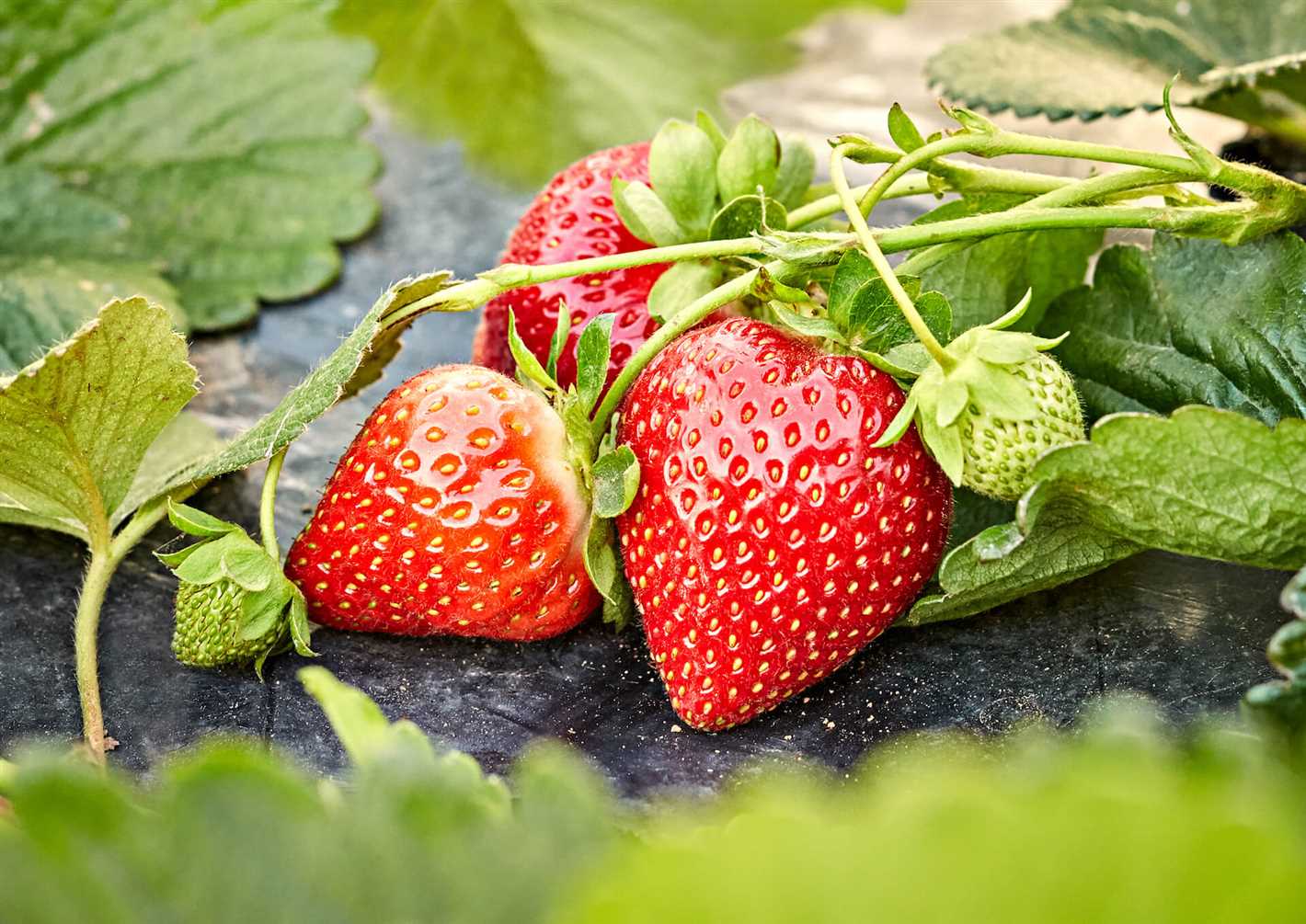
Separate the garlic bulb into individual cloves, making sure to keep the papery skin intact. Avoid using any damaged or shriveled cloves, as they may not grow properly. If the cloves have a hard, woody center, remove it as it may inhibit growth.
Step 4: Planting Garlic
Dig holes in the soil that are 2-3 inches deep, spacing them about 6-8 inches apart.
Place one garlic clove in each hole, pointed end up, and cover it with soil.
Water the soil lightly to settle it around the garlic cloves.
Add a layer of mulch, such as straw or wood chips, to help conserve moisture and suppress weed growth.
Step 5: Planting Strawberries
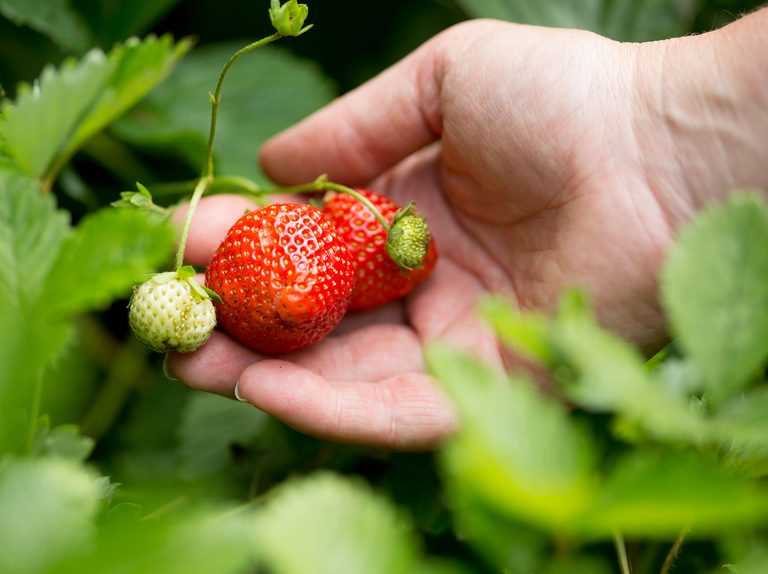
Choose a variety of strawberries that is known to grow well in your area.
Prepare the soil by removing any weeds and loosening it with a garden fork or tiller.
Dig planting holes that are wide and deep enough to accommodate the strawberry plants’ roots.
Place one strawberry plant in each hole, taking care not to overcrowd them.
Cover the roots with soil, leaving the crown of the plant exposed above the soil level.
Water the plants well and add a layer of mulch around them to conserve moisture and suppress weed growth.
Step 6: Caring for the Plants
Water the strawberries and garlic regularly, keeping the soil moist but not waterlogged. Mulch around the plants will help retain moisture and prevent weed growth. Remove any weeds that may appear near the plants to avoid competition for nutrients and water. Harvest the strawberries when they are ripe and enjoy the benefits of natural pest protection provided by the garlic.
Tips for Successful Planting
1. Choose the Right Location
Strawberries prefer a sunny spot with well-drained soil. Make sure to choose a location that receives at least 6 hours of direct sunlight per day. Avoid planting strawberries in low-lying areas that are prone to flooding, as excessive moisture can lead to root rot.
2. Prepare the Soil
Before planting, prepare the soil by removing any weeds or grass and loosening it with a garden fork or tiller. Incorporate organic matter such as compost or well-rotted manure to improve soil fertility and drainage. Aim for a pH level between 5.8 and 6.3, as strawberries prefer slightly acidic soil.
3. Choose the Right Varieties
There are many different strawberry varieties available, each with its own unique characteristics. Some varieties are better suited for certain climates or growing conditions. Research and choose the varieties that will thrive in your specific location.
4. Plant at the Right Time
Plant strawberries in early spring or late summer to give them enough time to establish before winter or summer heat. Avoid planting during extreme temperature periods to prevent stress on the plants. Check with your local agricultural extension office or gardening resources for specific planting times in your area.
5. Proper Spacing
When planting strawberries, make sure to space them properly to allow for adequate airflow and prevent the spread of diseases. Depending on the variety, space plants about 12-18 inches apart in rows with 2-3 feet between rows.
6. Watering
Provide consistent moisture to your strawberry plants, especially during periods of dry weather. Water at the base of the plants early in the morning to allow the foliage to dry before nightfall, as wet leaves are more susceptible to fungal diseases. Avoid overwatering, as it can lead to root rot.
7. Mulching
Apply a layer of mulch around the strawberry plants to help conserve moisture, suppress weeds, and prevent soil splashing onto the leaves. Organic mulches such as straw or shredded leaves work well for strawberries.
8. Fertilizing
Strawberries are heavy feeders and require regular fertilization for optimal growth and fruit production. Apply a balanced organic fertilizer or compost in early spring and then again after the first harvest. Follow the recommended application rates for the specific product you are using.
9. Pest and Disease Control
Monitor your strawberry plants regularly for signs of pests or diseases. Implement integrated pest management techniques such as handpicking pests, using row covers or netting, and applying organic insecticides or fungicides when necessary.
10. Harvesting
When the strawberries are fully ripe and bright red, gently pick them from the plants, making sure to leave the stems attached. Harvest regularly to encourage more fruit production and prevent overripe berries from attracting pests.
11. Crop Rotation
To prevent the buildup of pests and diseases in the soil, practice crop rotation. Avoid planting strawberries in the same spot for at least 3 years. Rotate with other unrelated crops such as vegetables or herbs.
Question-answer:
Can planting garlic with strawberries provide protection?
Yes, planting garlic with strawberries can provide reliable protection against pests and diseases.
What are the benefits of planting strawberries with garlic?
Planting strawberries with garlic can help repel pests, prevent diseases, and improve the overall health of the plants.
How does garlic protect strawberries from pests?
Garlic has natural compounds that repel pests like aphids, slugs, and nematodes, keeping them away from the strawberry plants.
What diseases can planting garlic with strawberries prevent?
Planting garlic with strawberries can help prevent diseases like gray mold, powdery mildew, and root rot.
How should I plant garlic with strawberries?
To plant garlic with strawberries, choose a sunny spot, prepare the soil, plant the garlic cloves around the strawberries, and water them regularly.







